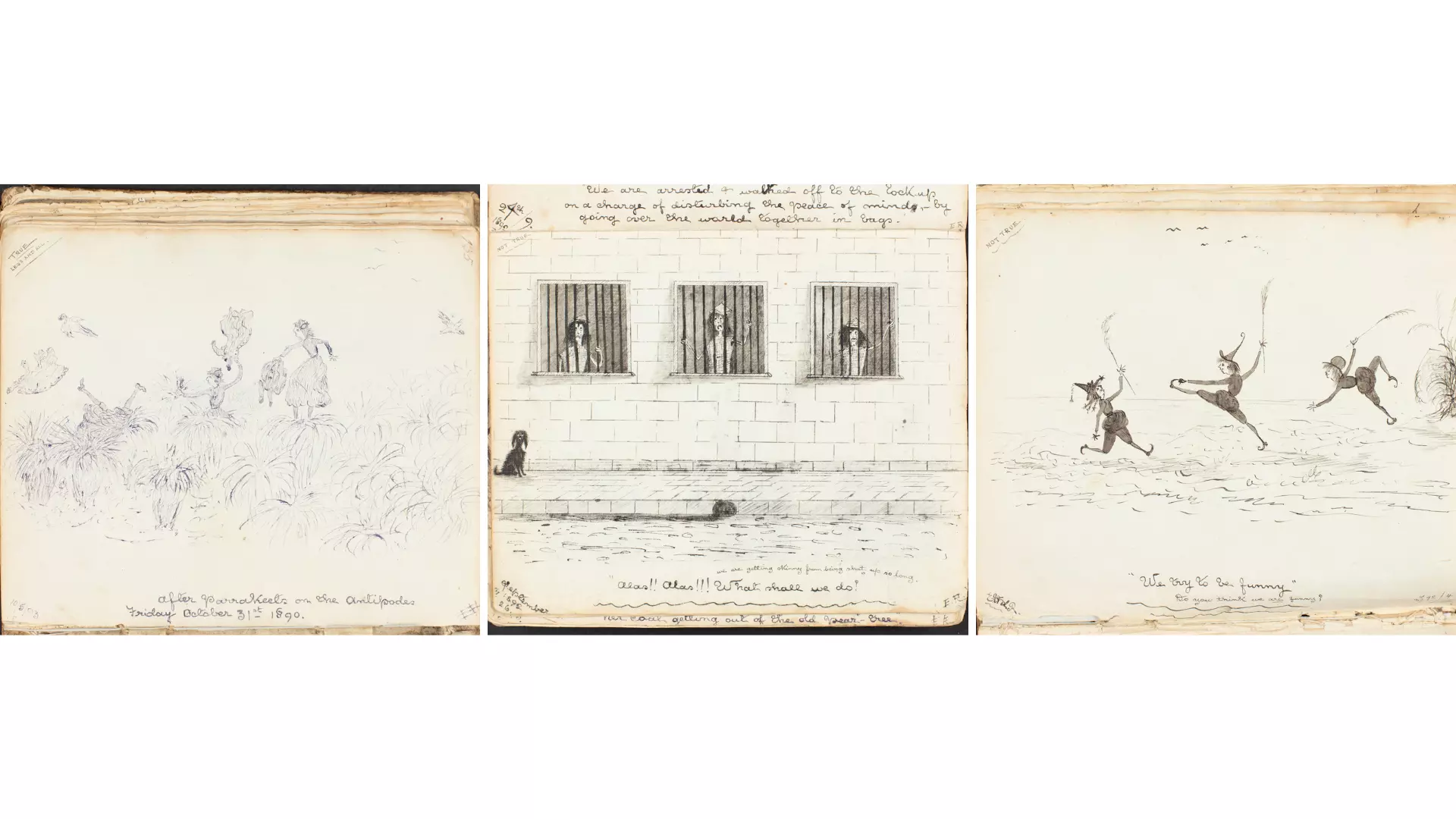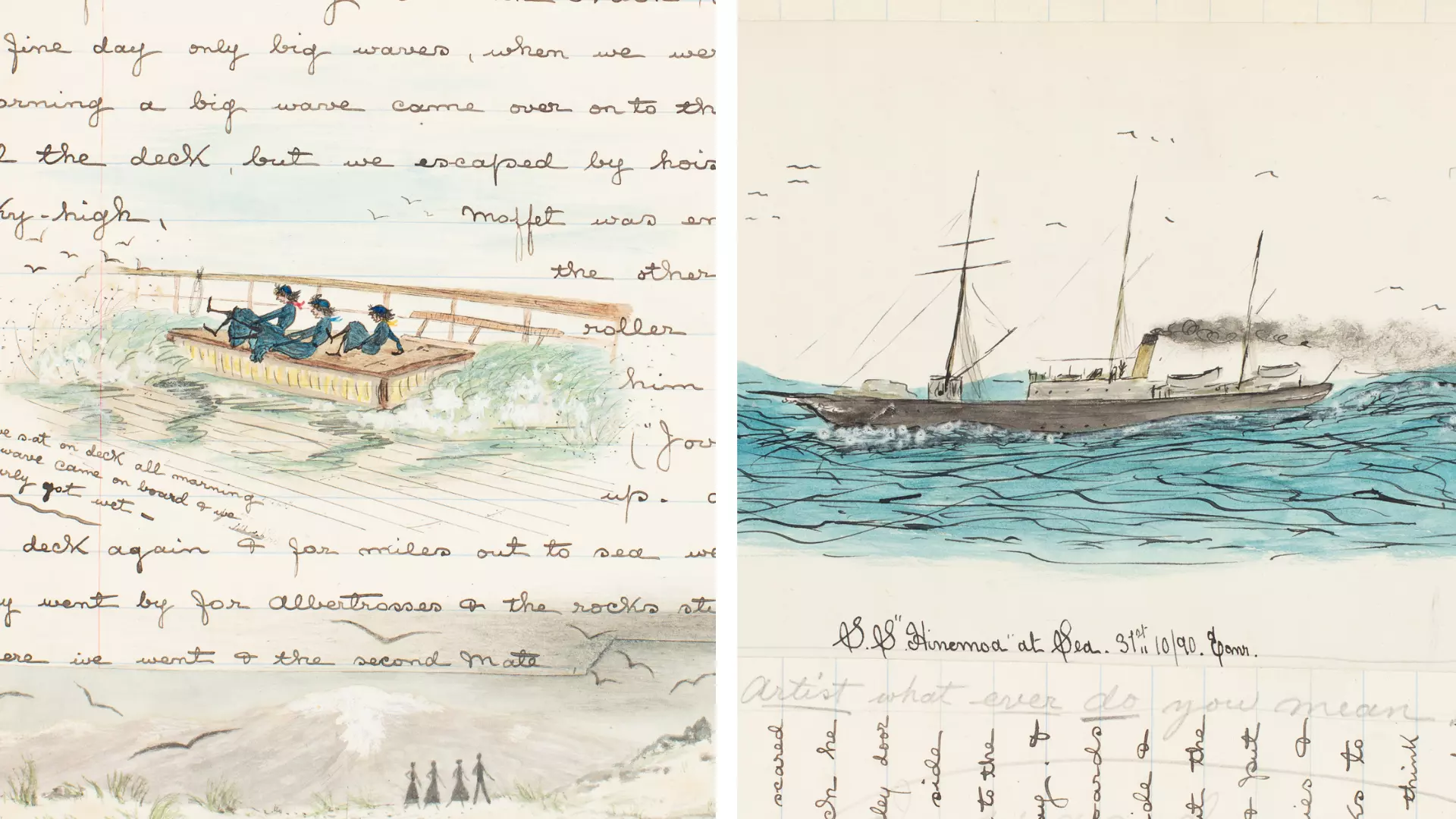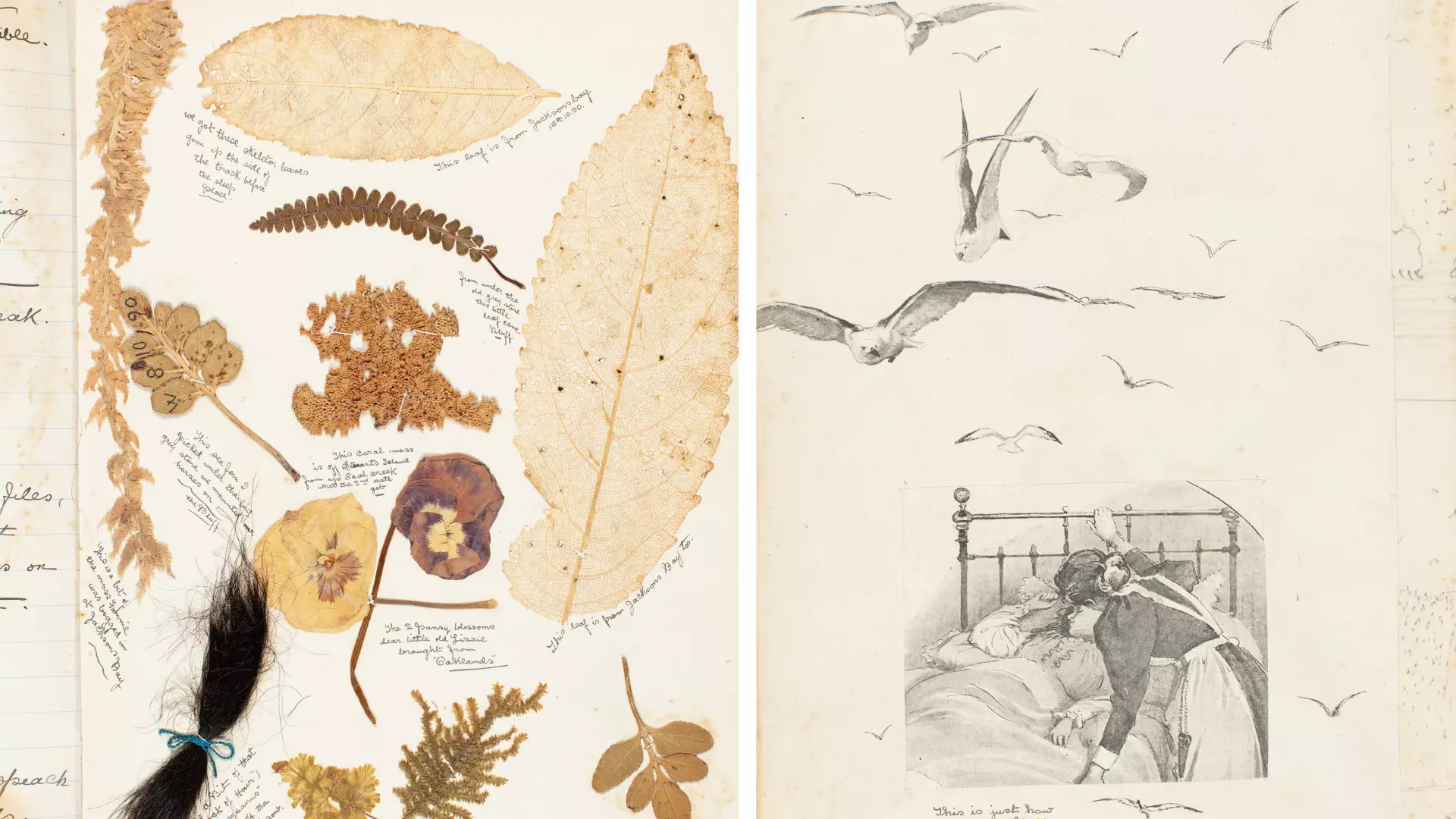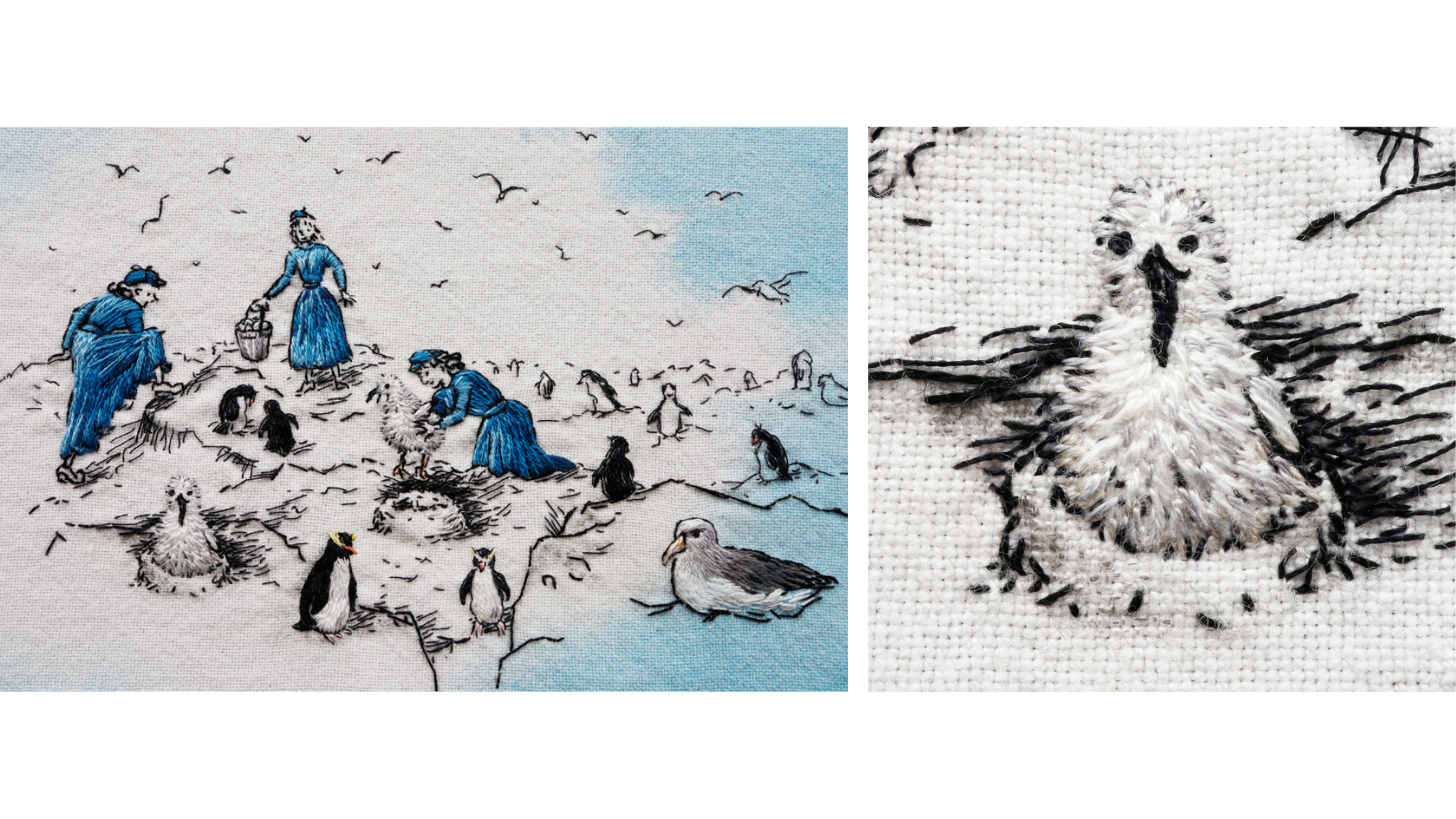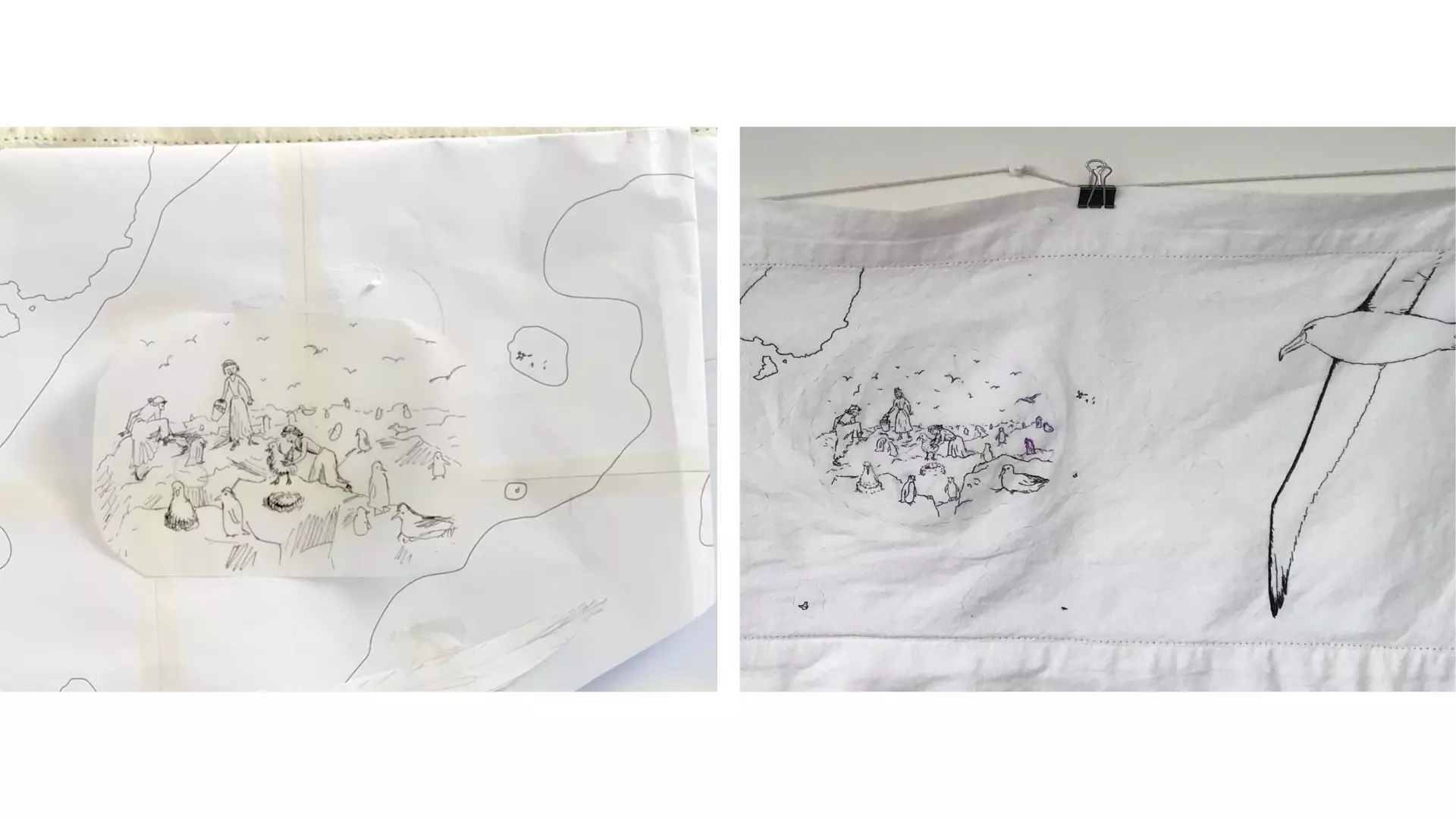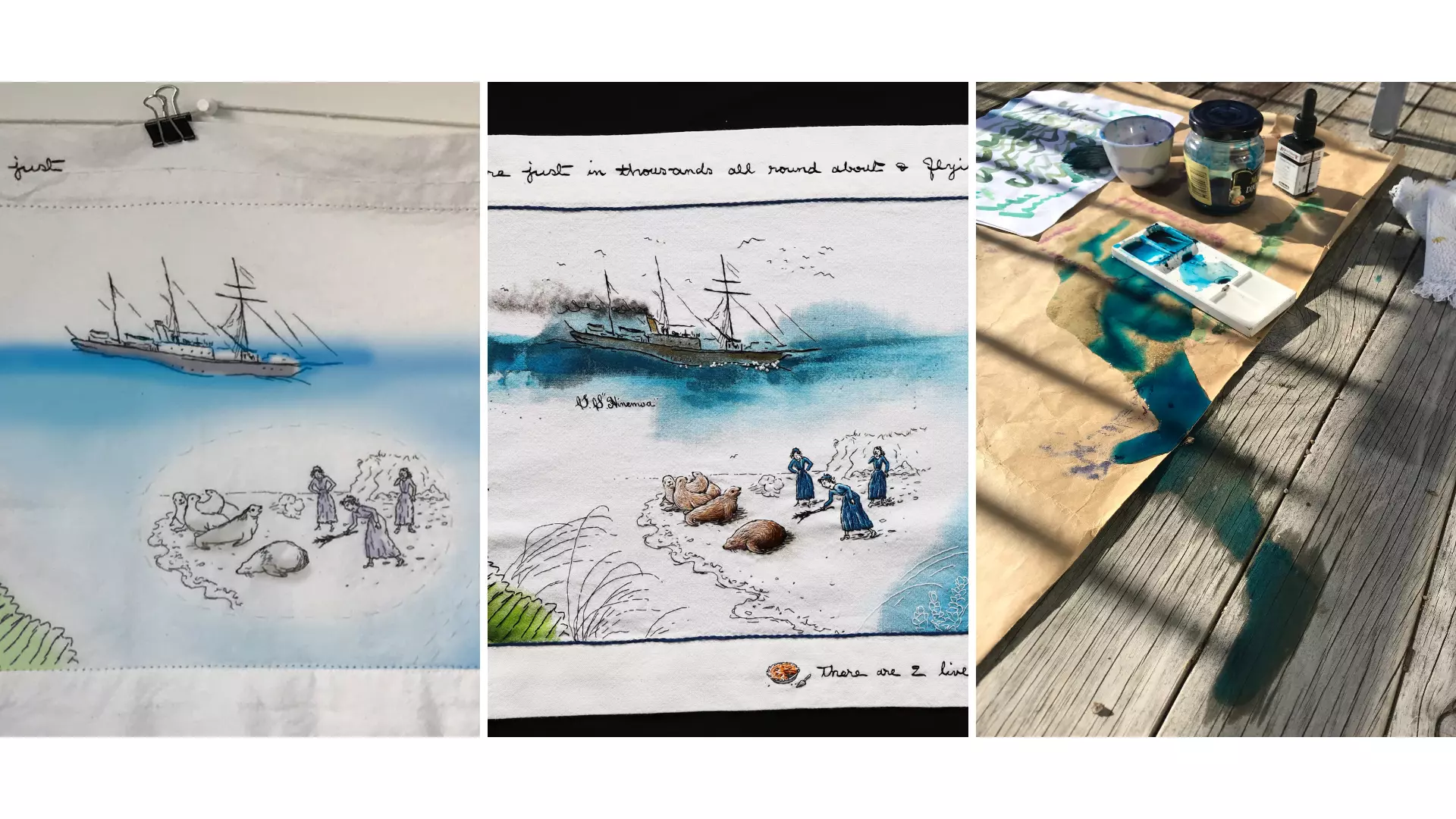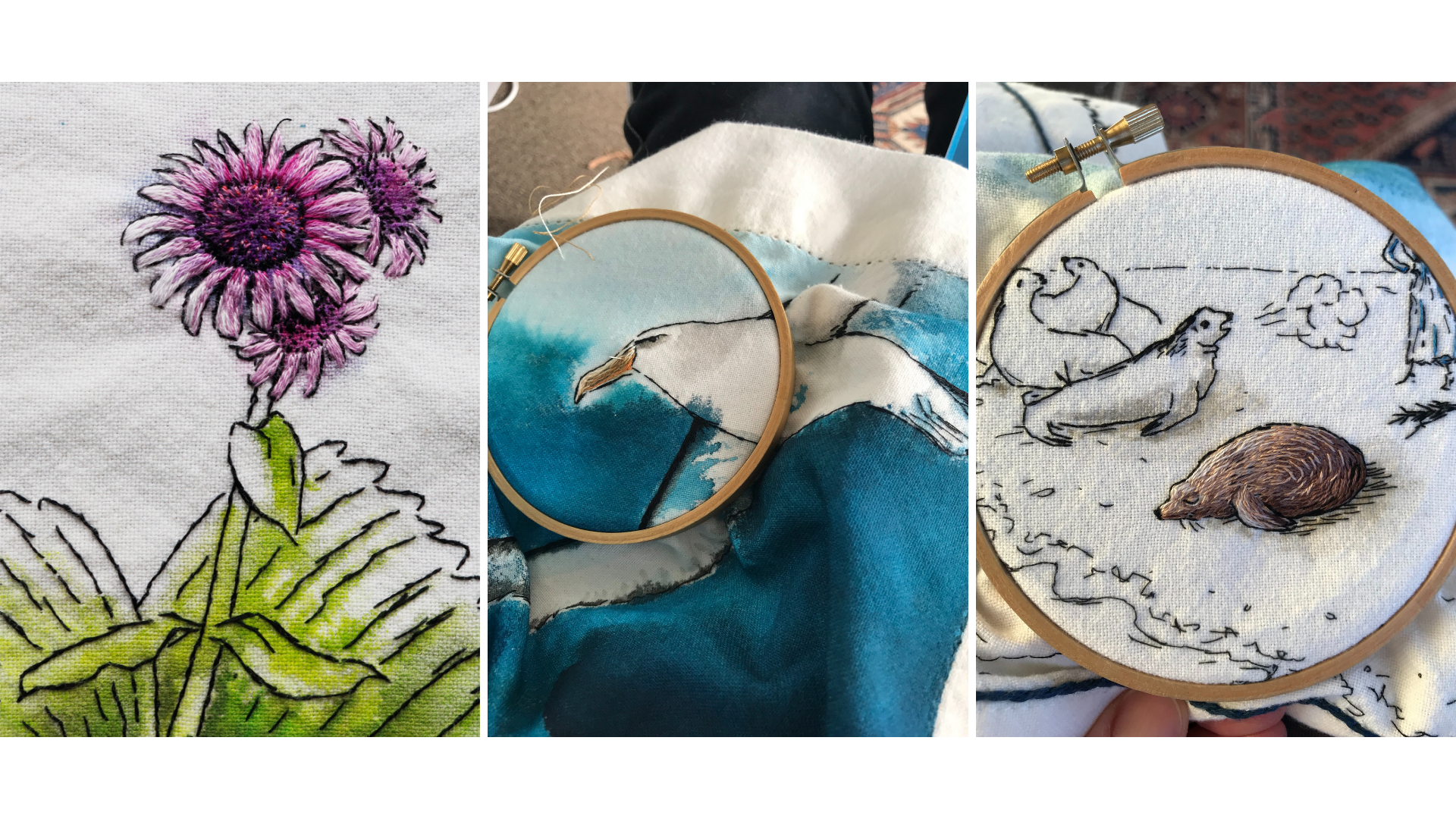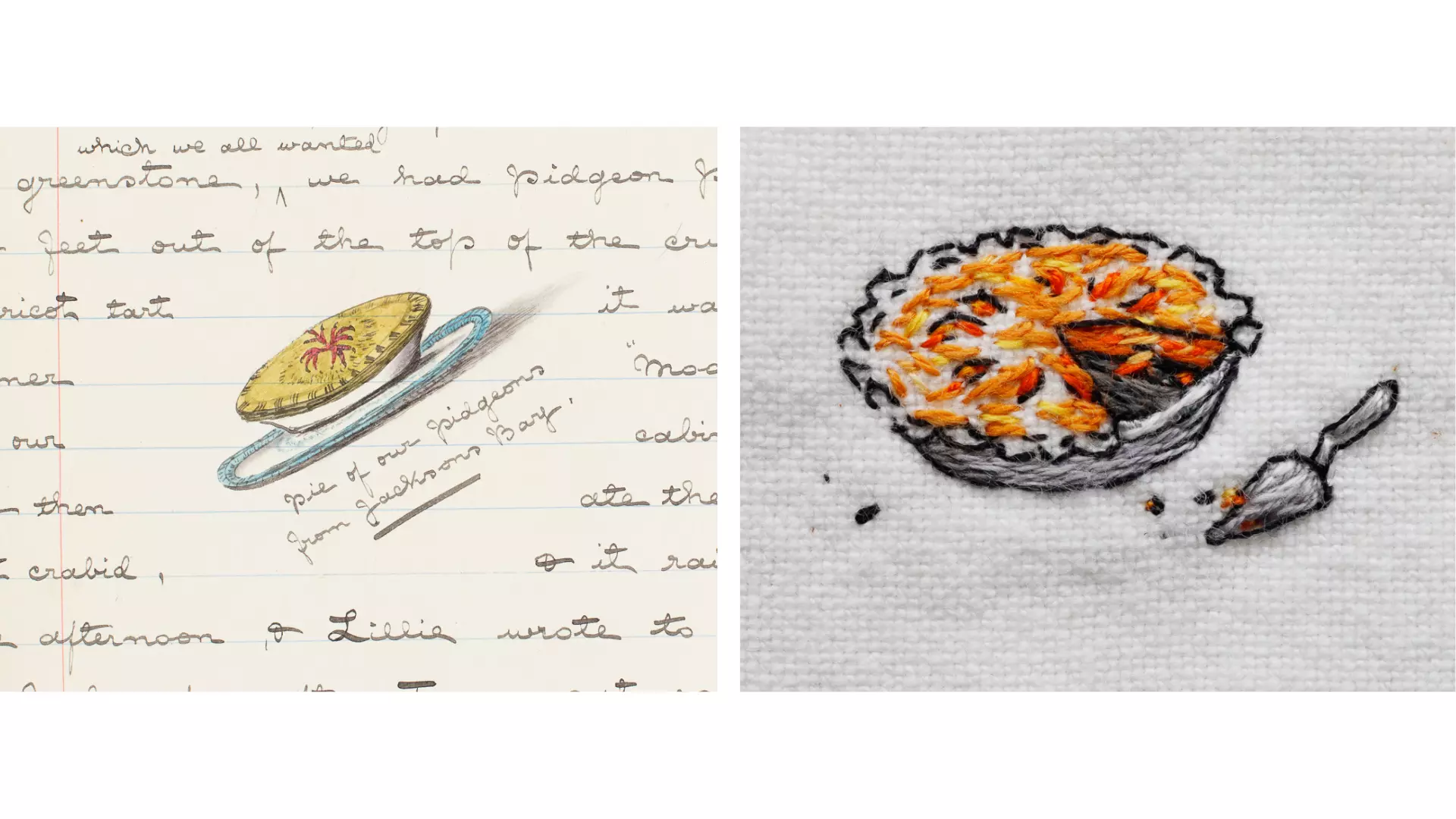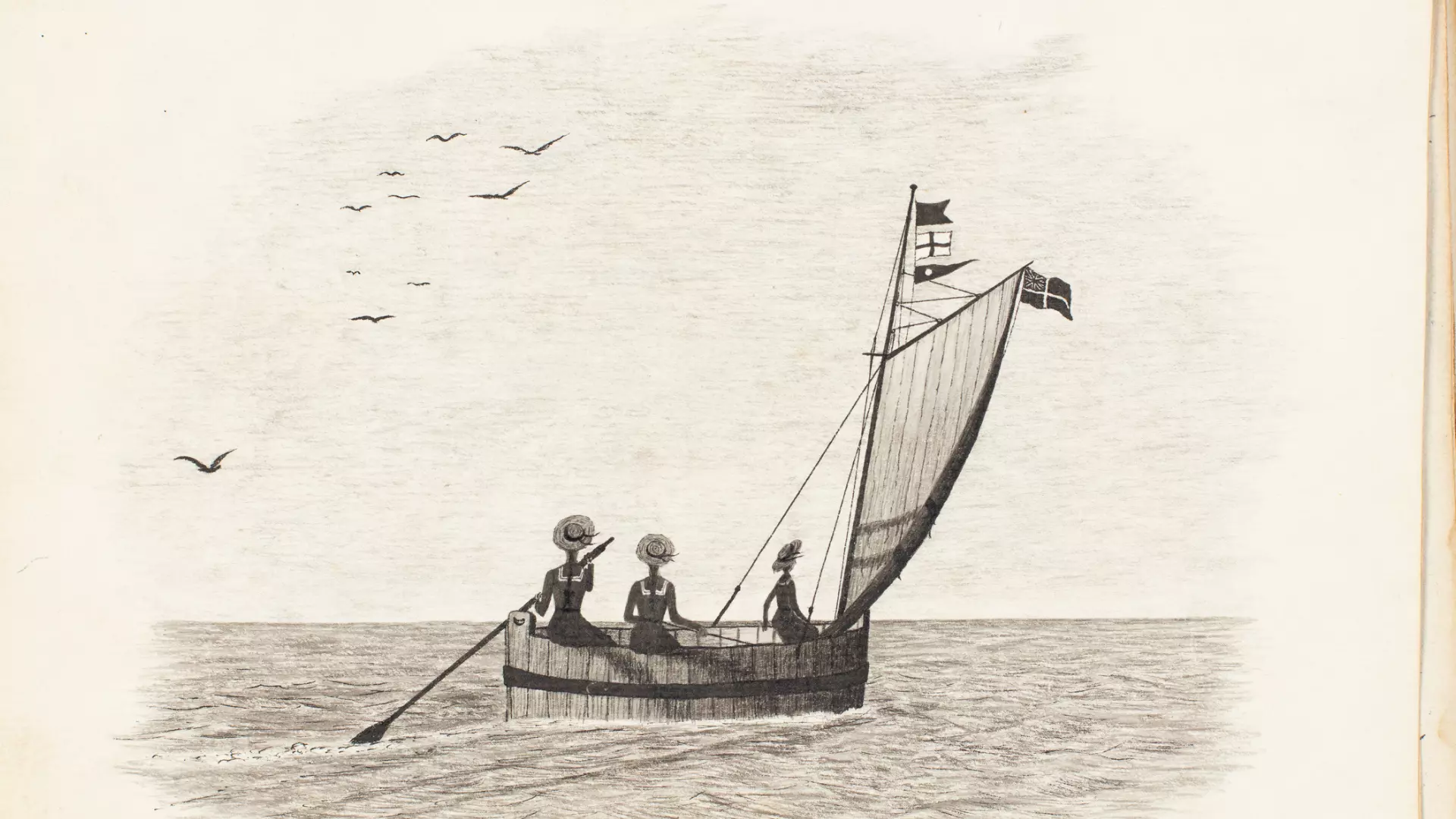We Three Go South
Artist May Trubuhovich’s new work We Three Go South was inspired by the story of three sisters and their journey around Aotearoa’s Subantarctic Islands on SS Hinemoa in 1890. One sister—Ethel Richardson—kept a diary of their antics. During the making process, museum intern Emily Nicholson talked with the artist.
By Emily Nicholson | 13 October 2021
In 1890, the Richardson sisters, Fannie (23), Ethel (21), and Lillie (19), embarked on a six-week-long journey on the government steamship Hinemoa. Their father, George Richardson (1837-1909), was Minister of Lands at the time. During the voyage, Hinemoa, with a primary purpose of servicing lighthouses and looking for castaways, visited the Subantarctic Islands. Ethel sketched and wrote about their adventures, many real and some imagined. She also collected specimens and keepsakes along the way. In 2014, Ethel’s great-niece, Cynthia Cass published We Three Go South: The 1890 Diary of Ethel Richardson's Trip to the Sub-Antarctic. After Ian Arbuthnott lent Ethel’s diary and sketchbook to the museum, Auckland artist, May Trubuhovich, was commissioned to create an artwork inspired by Ethel’s story.
May’s intricate textile works are created by combining hand embroidery and painterly elements. Differing from her previous work, this project tells another person’s story, set in a very different time.
‘I wanted to capture the free-spiritedness of [Ethel’s] tiny ink sketches and paintings, which are so full of wonderfully detailed observations and humorous editorial notes,” she says.

